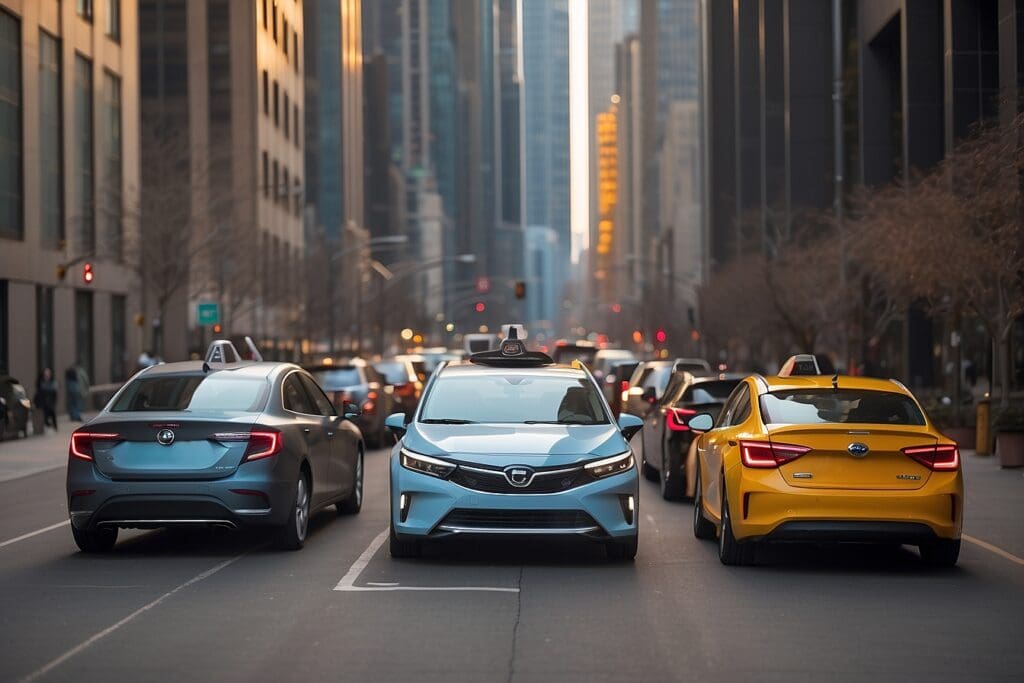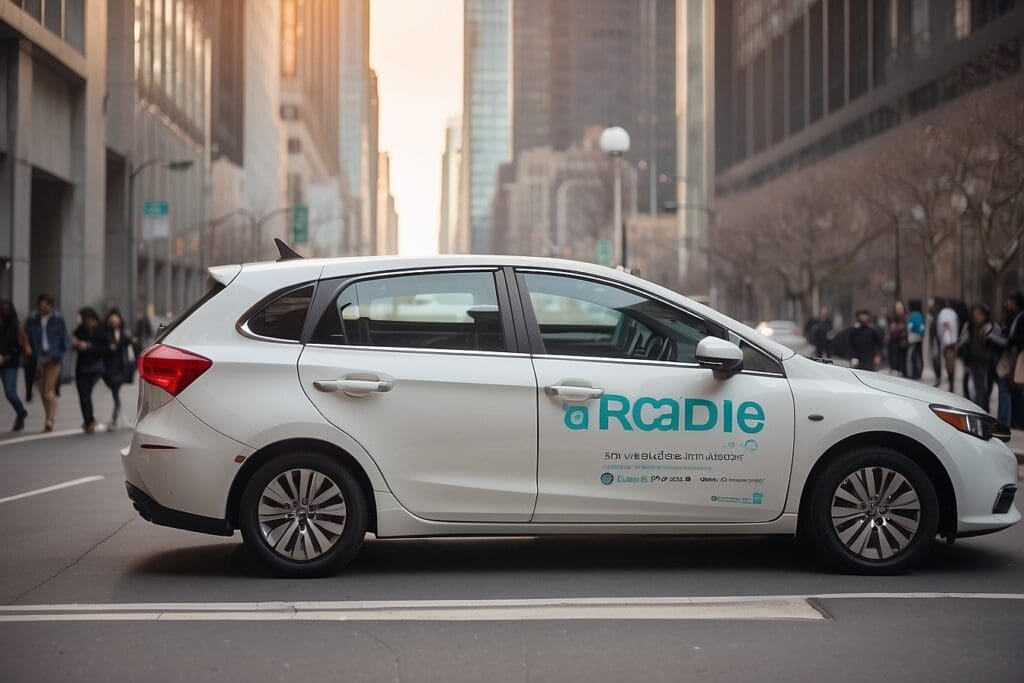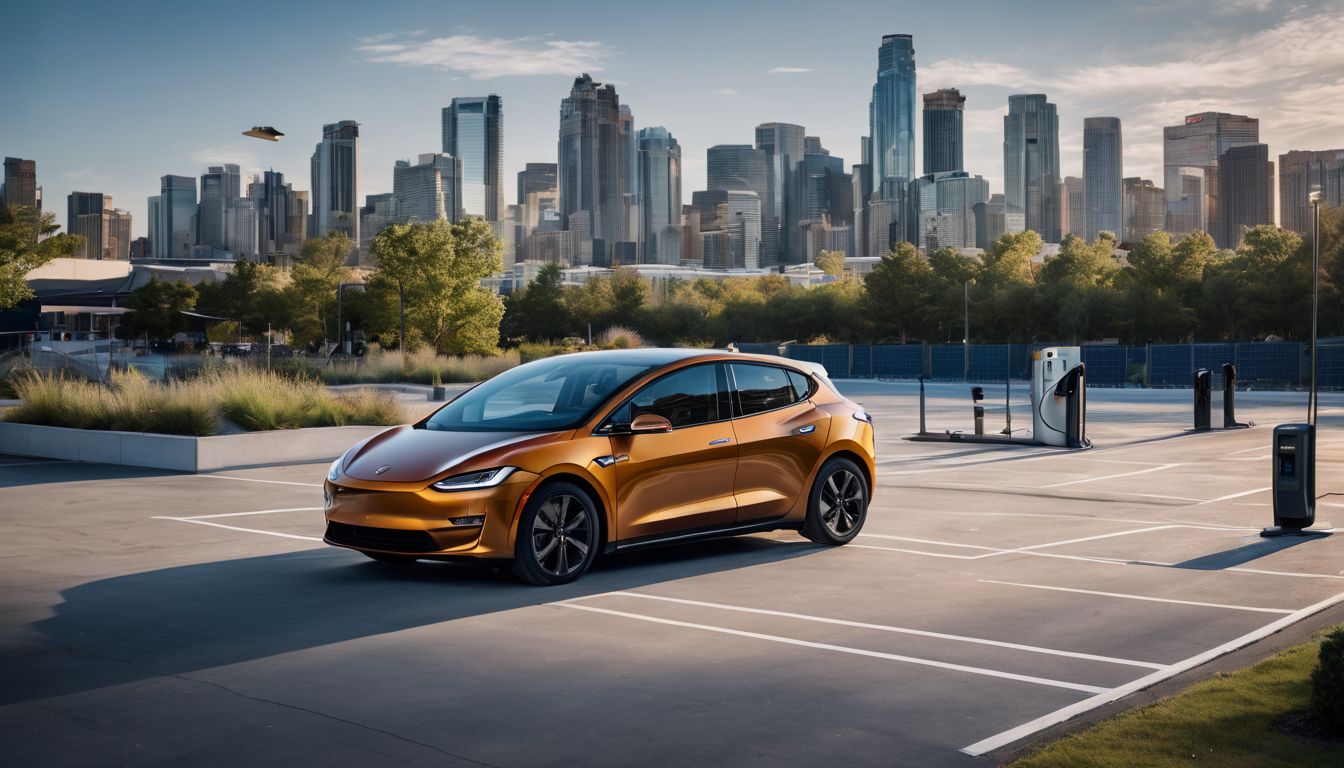We all aspire to lessen our environmental impact, and the idea of ride-sharing certainly struck a chord with us. It’s a familiar scene for many — choosing to hop into a shared vehicle instead of travelling solo in an attempt to reduce emissions.
Yet, recent research has thrown us a curveball; it turns out that in certain urban areas, opting for ride-sharing might have inadvertently contributed to upping total emissions by as much as 20%.
Our analyses are poised to unpack these paradoxical outcomes and suggest practical measures towards greener city commutes. Let’s delve into the nitty-gritty together and unearth how we can truly make strides towards environmental sustainability.
Key Takeaways
- Ride – sharing has unexpectedly led to more cars on the road, with each car driving longer distances and spending more time waiting for passengers. This increase in Vehicle Miles Travelled (VMT) and Vehicle Hours Travelled (VHT) contributes to higher emissions.
- Vehicles travelling without passengers, known as deadheading, add unnecessary miles and emissions. Longer wait times also mean cars stay idle for extended periods, further harming air quality.
- Despite pledges from rideshare companies to switch to all-electric fleets which could reduce their environmental impact, current ride-sharing practices are leading to a decrease in vehicle occupancy rates – meaning fewer people per vehicle and thus less efficient use of energy resources.
- Enhancing public transport integration with ride-sharing services through multi-modal platforms can make commutes more sustainable by reducing reliance on private vehicles.
- Incentivising carpooling and optimising routing algorithms within ride-sharing apps can lower the number of vehicles needed on the roads, thereby reducing both traffic congestion and automotive emissions.
The Effect of Ride-Sharing on Automotive Emissions
Ride-sharing has led to an increase in vehicle miles traveled (VMT) and vehicle hours traveled (VHT), as well as a decrease in vehicle occupancy rates.
Increase in Vehicle Miles Traveled (VMT)
We’ve noticed a worrying trend with the rise of ride-sharing: more cars cruise around for longer, clocking up extra miles. This uptick in Vehicle Miles Traveled (VMT) happens because each trip often starts with an empty car moving to pick up a passenger.
These additional miles add to our carbon footprint, since more driving means more emissions.
Cars without passengers represent missed opportunities for reducing automotive emissions. In urban areas especially, where rides are frequent but short in distance, this problem looms large.
We need to address the surge in VMT that ride-sharing has unintentionally encouraged if we’re serious about sustainable transport and cutting down on pollution. It’s clear that every extra mile driven matters when it comes to protecting our environment and tackling climate change.
Increase in Vehicle Hours Traveled (VHT)
Ridesharing has led to a noticeable increase in Vehicle Hours Traveled (VHT) as more cars are on the road for longer durations. This surge is due to drivers spending significant time waiting for passengers between trips, increasing the overall time their vehicles spend on the road.
Consequently, this contributes to higher levels of greenhouse gas emissions and air pollution, impacting urban air quality and climate risks. Understanding these implications can prompt us to explore sustainable solutions that address the environmental impact of shared mobility services.
In response, we must consider how this increase in VHT affects transportation emissions and evaluate potential strategies to mitigate its adverse effects. By focusing on initiatives such as improving connectivity and integrating ridesharing with public transport, we could work towards enhancing sustainable transportation options while also reducing vehicle hours traveled within urban areas.
Decrease in Vehicle Occupancy Rates
With the increase in vehicle hours traveled, ridesharing has seen a concerning decrease in vehicle occupancy rates. This trend means more cars are moving around with fewer passengers, contributing to higher emissions and wasted fuel.
As a result, the environmental impact becomes more pronounced as each car carries fewer passengers.
On the road, decreasing vehicle occupancy rates contribute significantly to increased urban pollution and greenhouse gas emissions. As environmentally conscious individuals supporting conservation and urban mobility, this decline is a clear indication of how ride-sharing’s potential benefits may be offset by its negative impact on automotive emissions.
Environmental Impact of Ride-Sharing

Higher greenhouse gas emissions and increased air pollution are key environmental impacts of ride-sharing. Factors such as deadheading and longer wait times also contribute to these negative effects on the environment.
Higher Greenhouse Gas Emissions
Ridesharing has led to a notable increase in greenhouse gas emissions due to the rise in vehicle miles traveled and vehicle hours traveled. This surge contributes significantly to urban passenger transport emissions and poses a threat to environmental conservation efforts.
The deadheading phenomenon, where drivers travel without passengers, further exacerbates this issue by adding unnecessary mileage and emissions.
Furthermore, longer wait times for ridesharing vehicles contribute not only to increased emissions but also to reduced air quality. As environmentally conscious individuals supporting conservation and environmental sustainability, it is important for us to recognise the impact of these trends on greenhouse gas levels and actively seek more sustainable transportation solutions.
Increased Air Pollution
Transitioning from higher greenhouse gas emissions, it’s important to note that the rise of ride-sharing also contributes to increased air pollution. The greater number of vehicles on the road due to ride-sharing services leads to more harmful emissions being released into the atmosphere, further exacerbating air quality issues in urban areas.
This increase in vehicle activity results in higher levels of pollutants such as nitrogen oxides and particulate matter, impacting public health and the environment.
Moreover, deadheading — when a driver operates without passengers — and longer wait times for pick-ups also play a significant role in contributing to increased air pollution levels.
Contributing Factors: Deadheading and Longer Wait Times
When ride-sharing vehicles travel without passengers, known as deadheading, it contributes to increased emissions and wastage of fuel. Deadheading leads to higher vehicle miles traveled and more time on the road, increasing greenhouse gas emissions and air pollution. Longer wait times for rides also result in additional idle time for vehicles, leading to unnecessary emissions and environmental impact. Additionally, the extended waiting periods may lead to passengers resorting to personal vehicles, further exacerbating automotive emissions.
Can Ridesharing Be Sustainable in the Future?
Many rideshare companies have promised to transition to all-electric fleets, offering potential solutions to reduce environmental impact and improve sustainability. To learn more about the future of ride-sharing and its impact on automotive emissions, continue reading our blog.
Promises of All-Electric Fleets by Rideshare Companies
Rideshare companies are making significant strides towards reducing automotive emissions by committing to transitioning their fleets to all-electric vehicles. This move is a promising step towards minimising the environmental impact of ride-sharing services.
Encouraged by the rise in electric vehicle technology and infrastructure, these companies aim to play a pivotal role in addressing urban transport challenges while significantly cutting down greenhouse gas emissions and improving air quality.
By investing in all-electric fleets, rideshare companies are actively contributing to the push for sustainable transportation solutions. Embracing this change could potentially lead to a substantial reduction in vehicle emissions and help create cleaner, greener city environments that benefit both residents and the planet as a whole.
Potential Solutions: Improving Connectivity and Integrating with Public Transport

In addition to the promises of all-electric fleets by rideshare companies, improving connectivity and integrating with public transport can also play a vital role in making ride-sharing more sustainable. Here’s how:
- Enhancing Integration with Public Transport Systems: By providing seamless integration with existing public transportation networks, ride-sharing can encourage more people to use eco-friendly modes of travel, reducing overall emissions and congestion.
- Implementing Multi-Modal Platforms: Developing platforms that allow users to plan and pay for multimodal trips including buses, trains, and ride-shares in a single app promotes efficient use of resources and reduces individual car usage.
- Encouraging Carpooling Initiatives: Offering incentives and facilitating easy matchmaking for carpooling among users can significantly decrease the number of vehicles on the road, leading to lower emissions and improved air quality.
- Optimising Routing Algorithms: Incorporating advanced algorithms to optimise route planning for shared rides can reduce miles travelled and idle time, resulting in lower greenhouse gas emissions from vehicles.
Conclusion
In conclusion, the rise of ride-sharing has led to an increase in vehicle miles traveled and vehicle hours traveled. This surge in activity has resulted in higher greenhouse gas emissions and increased air pollution.
Although ride-sharing companies have pledged to transition to all-electric fleets, addressing issues such as deadheading and longer wait times is crucial for improving sustainability.
With ongoing effort, integrating with public transport and enhancing connectivity can help mitigate the environmental impact of ride-sharing on automotive emissions.
FAQs
1. How does ride-sharing affect automotive emissions?
Ride-sharing can help reduce automotive emissions by lowering the vehicle miles travelled and vehicle hours travelled, as it means fewer cars are on the road.
2. Can switching to an electric fleet in ride-sharing make a difference for the environment?
Yes, using an electric fleet for ride-sharing significantly cuts down electric vehicle emissions and greenhouse gases compared to traditional petrol or diesel cars.
3. Does ride-sharing contribute to less traffic congestion?
Ride-sharing has the potential to ease traffic congestion which can lead to fewer idle times for vehicles, subsequently reducing overall automotive emissions.
4. Will more people using ride-sharing mean we have cleaner air?
If more individuals opt for ride-sharing instead of driving alone, it could result in fewer cars operating at once leading to lower emission levels and consequently cleaner air.





